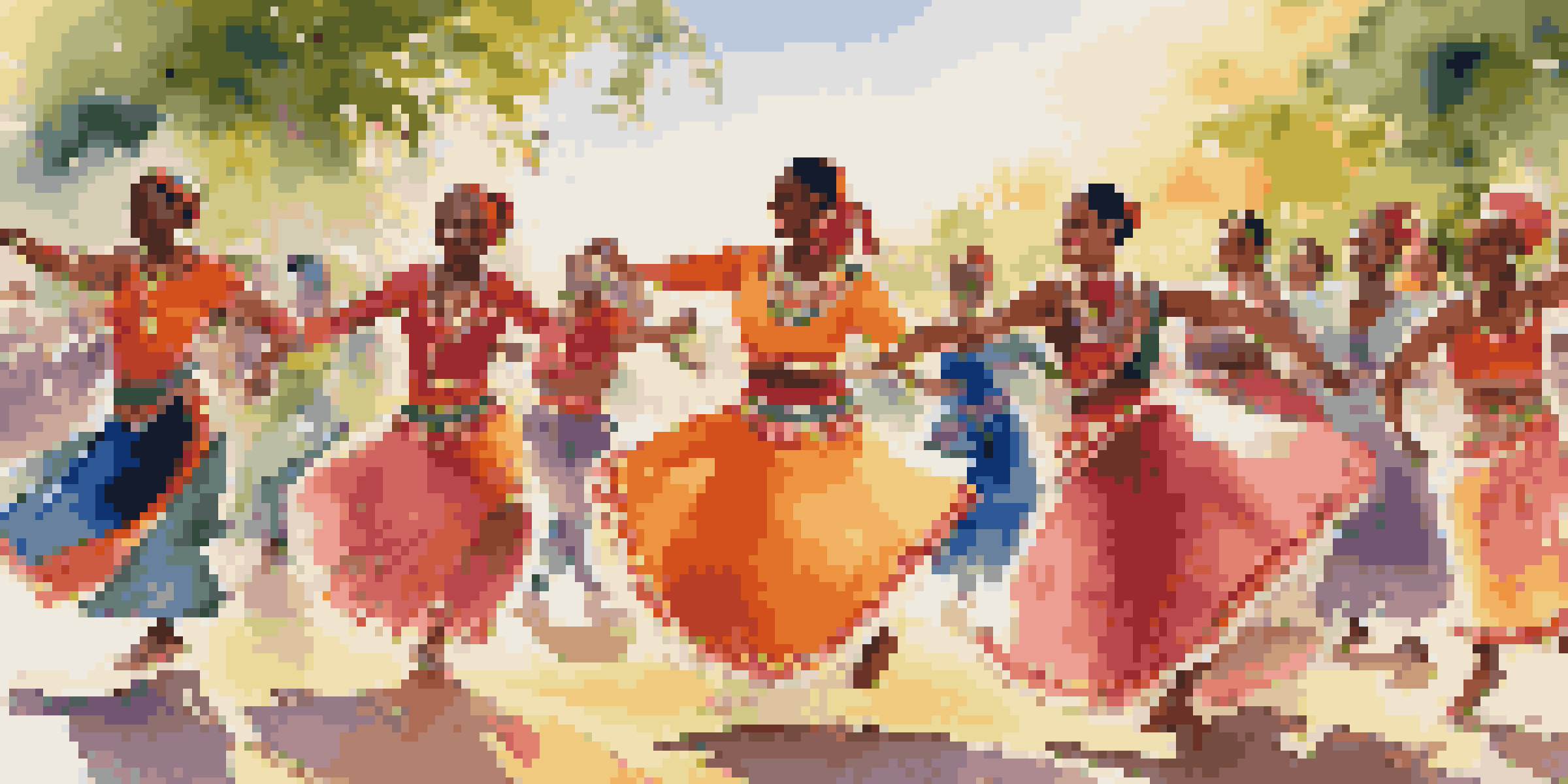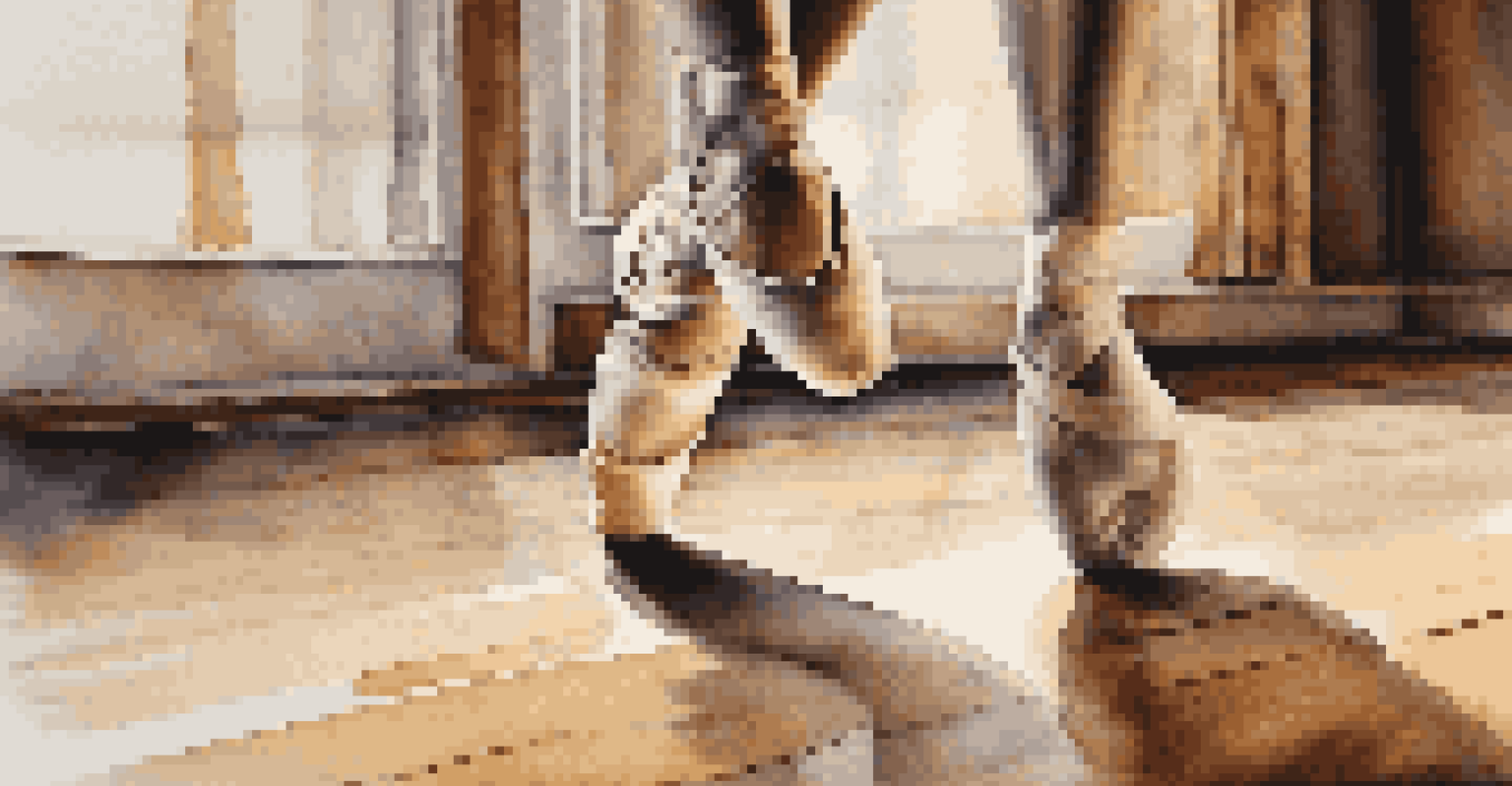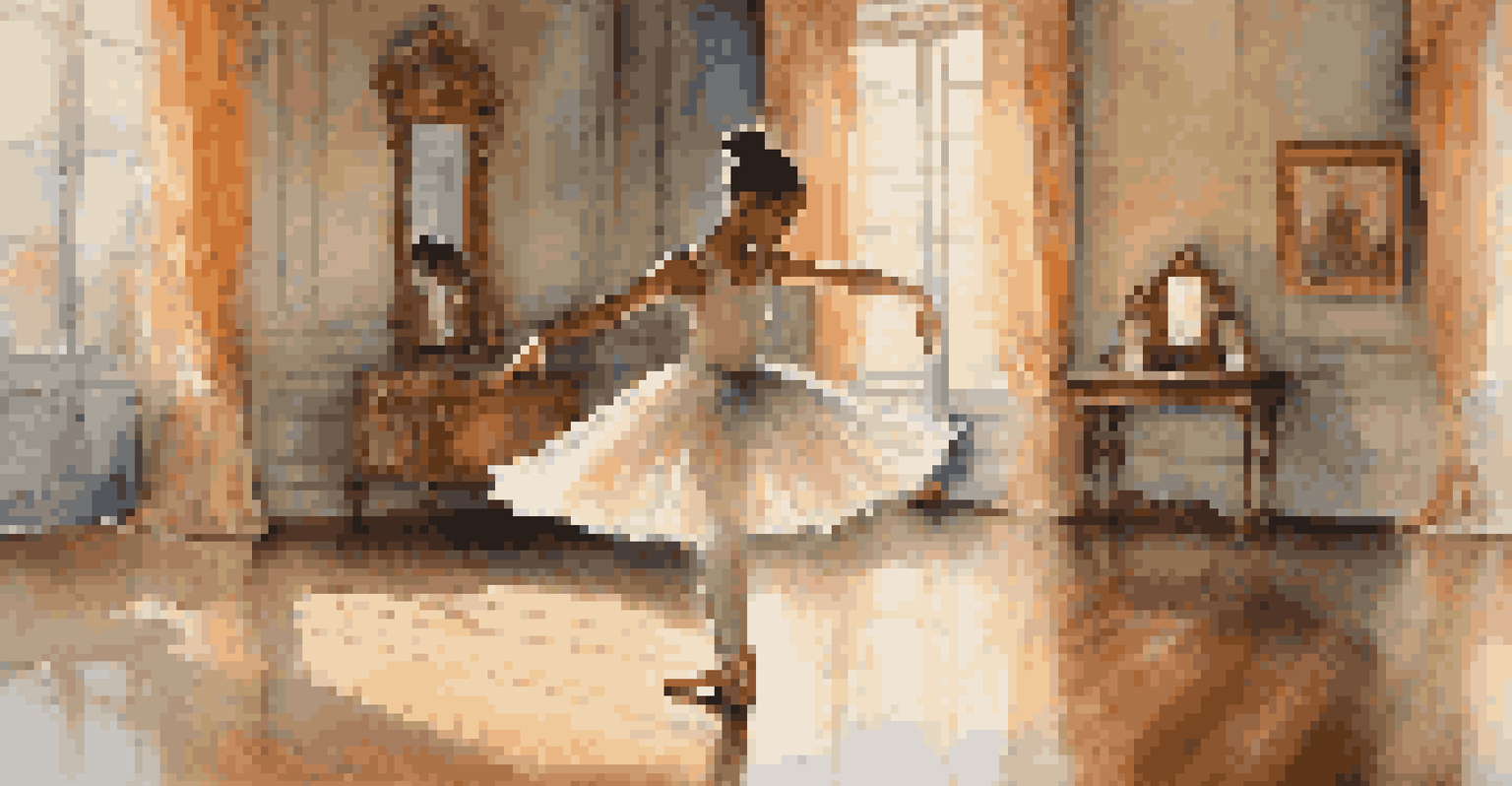The Influence of Cultural Dance on Body Image and Awareness

Understanding Body Image Through Cultural Dance
Body image refers to how we perceive our physical appearance and how we believe others see us. Cultural dance offers a unique lens through which individuals can explore and appreciate their bodies, embracing their uniqueness. For many, participating in traditional dance forms fosters a sense of pride and connection to their heritage, promoting a healthier self-image.
Dance is the hidden language of the soul.
Through movement, dancers often celebrate their bodies' capabilities rather than focusing solely on aesthetics. This shift in perspective can empower individuals, allowing them to appreciate their physicality in a new light. Cultural dances, often rich in history and significance, remind dancers that their bodies tell a story, enhancing their body awareness.
As dancers immerse themselves in cultural expressions, they often experience a boost in confidence. This newfound confidence can transcend the dance floor, impacting how they view themselves in everyday life. Ultimately, cultural dance encourages individuals to embrace their bodies, helping to cultivate a positive body image.
The Role of Community in Shaping Body Awareness
Engaging in cultural dance often means being part of a community that values diversity and acceptance. These communities provide a supportive environment where individuals can express themselves freely, fostering body positivity and self-acceptance. When people dance together, they celebrate not just their differences but also their shared love for movement and culture.

Such communal experiences can significantly influence one's body awareness. When surrounded by others who embrace their unique forms, individuals often feel less pressure to conform to societal beauty standards. This sense of belonging can help reduce feelings of insecurity, creating a space where everyone feels valued and appreciated.
Cultural Dance Boosts Body Positivity
Engaging in cultural dance fosters a sense of pride and self-acceptance, enhancing overall body image.
Moreover, the positive reinforcement from peers in dance communities can encourage individuals to be more comfortable in their own skin. This acceptance breeds a culture of appreciation for all body types and encourages self-love, reminding dancers that their worth isn't dictated by their appearance but rather by their spirit and passion.
Cultural Dance as a Form of Self-Expression
Cultural dance provides a powerful platform for self-expression, allowing individuals to connect with their emotions and experiences. This connection often leads to a deeper understanding of oneself, fostering greater awareness of how one’s body moves and feels. Through dance, individuals can communicate feelings that might be hard to articulate in words, enriching their self-perception.
The body says what words cannot.
For many, the act of dancing can be cathartic, offering an outlet for stress and anxiety. In this way, cultural dance not only engages the body but also nurtures the mind and spirit. As dancers express their feelings through movement, they often find a sense of liberation and empowerment, enhancing their overall body image.
Additionally, the intricacies of various cultural dances can teach individuals to appreciate the beauty in their own bodies. Each dance has unique movements that highlight different physical attributes, encouraging participants to celebrate their own forms and abilities. This celebration of diversity in movement can lead to a more inclusive understanding of beauty.
The Impact of Media Representations on Dance and Body Image
Media plays a significant role in shaping perceptions of body image, often portraying narrow definitions of beauty. However, cultural dance can counteract these limiting representations by showcasing a variety of body types and movements. When media highlights diverse dancers, it can inspire individuals to embrace their own bodies, promoting a more inclusive perspective.
The visibility of different cultural dances in mainstream media can also challenge stereotypes and broaden the understanding of beauty. By showcasing dancers from various backgrounds and sizes, media can shift the narrative towards body positivity and self-acceptance. This representation is crucial in helping individuals see themselves reflected in the art form, reinforcing the idea that all bodies are beautiful.
Community Supports Body Awareness
Being part of a dance community encourages individuals to embrace their unique bodies and reduce insecurities.
Moreover, social media platforms have become a space where dancers can share their experiences and connect with others. The rise of dance challenges and cultural showcases online fosters a sense of community, allowing individuals to celebrate their bodies in a supportive environment. The more diverse representations we see, the more we can shift societal standards of beauty.
Dance Education: Fostering Body Positivity in Youth
Incorporating cultural dance into education can play a pivotal role in shaping children’s body image and self-awareness. When young people are exposed to various dance forms, they learn to appreciate diverse body types and movements from an early age. This education can instill a sense of confidence and acceptance that lasts a lifetime.
Dance classes that focus on cultural expressions encourage students to embrace their own bodies and those of their peers. These classes often emphasize the joy of movement over competition, fostering an environment where every student feels valued. As children engage with dance, they learn to celebrate their individuality, promoting a positive body image.
Furthermore, dance education can empower students to express their emotions and stories through movement. This creative outlet not only enhances physical awareness but also nurtures emotional intelligence. By encouraging self-expression, cultural dance education helps young people develop a strong sense of self-worth and body confidence.
Personal Stories: Transformative Journeys Through Dance
Many individuals have shared transformative journeys that highlight the impact of cultural dance on their body image and self-awareness. For example, someone might recount how learning a traditional dance helped them embrace their curves and celebrate their heritage. These personal stories shine a light on the powerful connection between cultural dance and self-acceptance.
Such narratives often reveal how dance can serve as a healing mechanism, allowing individuals to process their emotions and conquer insecurities. By sharing their experiences, dancers inspire others to engage with their bodies in a positive way. These stories remind us that everyone has the potential to find strength and confidence through movement.
Diverse Media Shapes Body Image
Inclusive representations of dancers in media challenge stereotypes and promote a broader understanding of beauty.
Moreover, witnessing the journeys of others can foster a sense of community and support. Individuals often find solace in knowing they are not alone in their struggles with body image. Cultural dance becomes a shared experience, encouraging collective healing and empowerment through movement.
The Future of Cultural Dance and Body Image Awareness
As society continues to evolve, the role of cultural dance in promoting body image awareness remains crucial. The future holds the potential for even greater inclusivity and representation within dance communities. By embracing diverse forms of dance, we can create spaces where all bodies are celebrated and appreciated.
Increased awareness around body positivity movements also encourages dancers to challenge traditional norms and redefine beauty. As more individuals share their experiences and stories, the narrative surrounding body image continues to shift. This evolution can lead to a richer appreciation for the art of dance and the bodies that create it.

Ultimately, the future of cultural dance should prioritize empowerment and self-acceptance. By fostering environments that support diverse expressions of movement, we can inspire generations to embrace their bodies and cultivate a positive self-image. Dance will remain a powerful tool for connection, healing, and self-discovery.